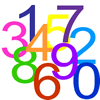Skip over navigation


Or search by topic
Number and algebra
Geometry and measure
Probability and statistics
Working mathematically
Advanced mathematics
For younger learners
Spectrometry Detective
Age 16 to 18
Challenge Level 





- Problem
- Getting Started
- Student Solutions
- Teachers' Resources
Why do this problem?
This problem gives practice in mathematical reasoning in a genuine scientific context. It involves reasonably basic mathematics of combinatorics but requires more advanced inductive reasoning. It might prove an interesting context for the prospective mathematician and will definitely be useful for those interested in studying chemistry at university.Possible approach
As this problem does not fit directly into the typical
chemistry or mathematics classroom it could be used as an end of
term activity in which the focus is to encourage some clear
mathematical thinking in a cross-curricular context.
Suggest that students interested in both chemistry and
mathematics try the problem, either individually or in small
groups. The basic chemical knowledge required is simply that of
isotopes and atomic mass. The mass spectrometer might be
unfamiliar, but should be simple to grasp in essence.
The focus throughout the problem should be on clarity in the
mathematical explanations, and there will be an element of
convincing others of the soundness of any resulting analysis.
When this problem was created it caused a great deal of
discussions amongst students. Hopefully some of this discussion
might be replicated amongst your students.
Finally, note that this problem is of an industrial, real
world sort. It gives a flavour of the types of real questions which
might be asked to professional scientists and mathematicians, where
errors in mathematical reasoning can be highly costly . It gives
great practice in such thinking.
Key questions
Have you understood the chemical terms?
Which numbers seem to stand out, when compared with the
periodic table?
Are you clear as to which aspects of you calculations are
mathematically certain?
Possible extension
Extension is built into this problem directly.
Possible support
To make this problem more straightforward, provide copies of
the periodic table. Suggest that students write down all the
diatomic gasses that they know and start from these.
For a more straightforward foray into combinatoric chemistry,
try the problem Heavy
Hydrocarbons.
You may also like
Teams
Two brothers belong to a club with 10 members. Four are selected for a match. Find the probability that both brothers are selected.
Binomial Coefficients
An introduction to the binomial coefficient, and exploration of some of the formulae it satisfies.

